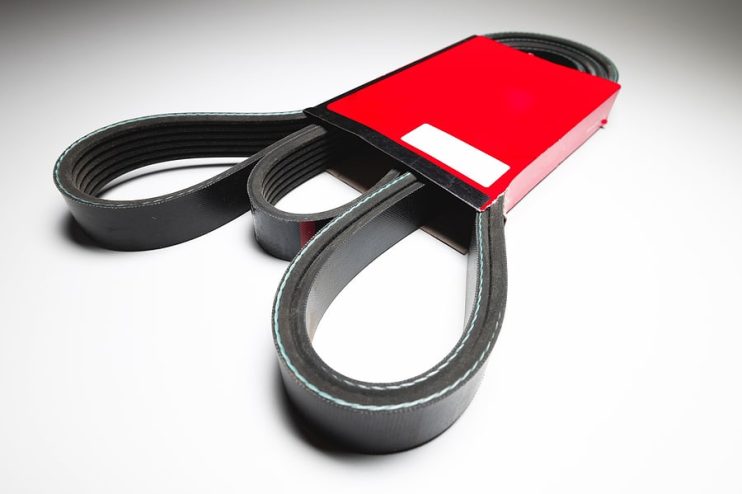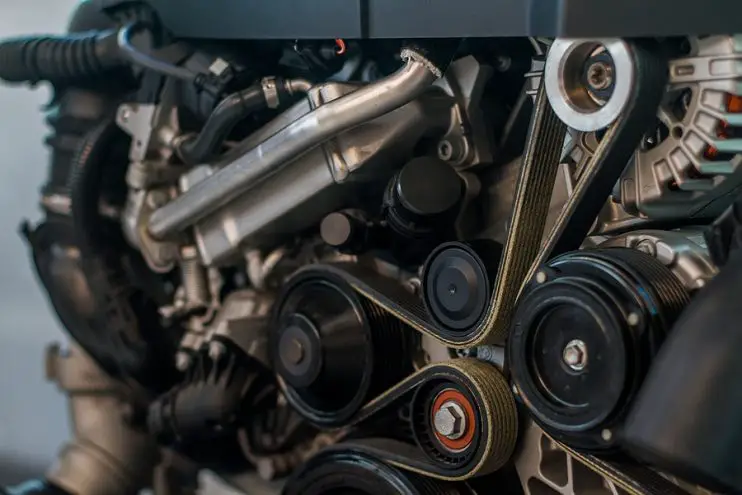A too-tight serpentine belt can cause squealing noises, rapid wear, and damage to components like the alternator or power steering pump. It may also lead to overheating or reduced fuel efficiency.
The serpentine belt is a crucial component of your vehicle’s engine, responsible for driving multiple accessories such as the alternator, air conditioning compressor, water pump, and power steering pump. It is a single, continuous belt that snakes around various pulleys and helps power these essential systems. However, just like other parts of your car, the serpentine belt requires proper tension to function optimally. When the belt is too tight, it can cause several issues that can lead to vehicle breakdowns or even damage to other parts of the engine.
In this blog post, we’ll explore the symptoms of a serpentine belt that is too tight, the potential causes, and how to address the problem to avoid further damage.

Contents
What Happens When the Serpentine Belt Is Too Tight?
A serpentine belt that is too tight may seem like a minor issue at first, but it can have significant repercussions for the overall health of your vehicle. The tension in the belt is typically managed by an automatic tensioner, which maintains the correct amount of tension. If the tensioner fails or the belt is improperly installed, it can lead to excessive tightness. When the belt is too tight, it puts undue stress on various components of the engine, leading to premature wear, increased friction, and even failure of certain engine systems.
Serpentine Belt Too Tight Symptoms
Several signs can indicate that your serpentine belt is too tight. These symptoms can affect the vehicle’s performance and cause a variety of issues that require immediate attention.
1. Increased Engine Noise
A serpentine belt that is too tight can create extra friction in the engine, which may lead to unusual sounds. One of the most common noises is a high-pitched squealing or screeching sound, often heard when the engine is started or when the vehicle is idling. While some squealing noises are normal for a serpentine belt, an excessively tight belt can amplify the sound and make it more noticeable. The noise occurs because the belt is under more stress than it should be, causing it to rub against the pulleys more intensely.
2. Excessive Wear on the Serpentine Belt
When the serpentine belt is too tight, it causes excessive friction against the pulleys, which can lead to faster wear and tear on the belt itself. Over time, this can result in cracking, fraying, or even complete failure of the belt. If you notice visible signs of wear on the belt, such as cracks, fraying edges, or a glazed appearance, it is crucial to inspect the tension of the belt and make adjustments.
3. Overheating of Engine Components
The serpentine belt also drives the water pump, which circulates coolant through the engine to regulate its temperature. If the belt is too tight, it can cause the water pump to work harder than necessary. This additional strain can result in inadequate coolant flow, leading to overheating of the engine. An overheated engine can cause long-term damage, so it’s vital to address the issue before it results in a complete breakdown.
4. Power Steering Failure
The serpentine belt plays a vital role in powering the power steering pump, which helps you steer your vehicle more easily. If the belt is too tight, it can put excessive pressure on the power steering pump, causing it to malfunction. Symptoms of power steering failure include difficulty turning the steering wheel, unusual noises when steering, or a sudden loss of power steering altogether. If left unaddressed, this issue can lead to costly repairs and even complete power steering pump failure.
5. Battery Warning Light or Charging Issues
The alternator, which charges your vehicle’s battery, is powered by the serpentine belt. When the belt is too tight, it can cause the alternator to work harder than usual, leading to overheating or excessive wear on the alternator’s bearings. In some cases, the alternator might fail entirely, leading to a dead battery and the appearance of the battery warning light on the dashboard. If the alternator is unable to charge the battery properly, you may experience electrical issues or a vehicle that won’t start.
6. Tensioner and Pulley Damage
When the serpentine belt is too tight, it places additional strain on the tensioner and pulleys. Over time, this excessive force can cause these components to wear out prematurely. A damaged tensioner may fail to maintain the correct tension in the belt, causing it to slip or wear out faster. Similarly, damaged pulleys can lead to further problems, including erratic belt movement, excessive friction, and additional wear on other engine components.
7. Poor Fuel Efficiency
An engine that operates under additional strain due to an overly tight serpentine belt may experience decreased fuel efficiency. This is because the engine has to work harder to overcome the added resistance caused by the tight belt. As a result, your vehicle may consume more fuel than usual, leading to higher fuel costs. If you notice a sudden drop in fuel efficiency, it’s worth checking the serpentine belt tension as a potential cause.
Causes of a Serpentine Belt Being Too Tight
There are several reasons why a serpentine belt may become too tight, including:
- Faulty Tensioner: The tensioner is responsible for maintaining the correct tension on the serpentine belt. If the tensioner is malfunctioning, it may apply too much pressure on the belt, causing it to become overly tight.
- Improper Installation: If the serpentine belt was installed incorrectly, it could result in improper tension. This is especially true if the belt is not routed around the pulleys in the correct pattern or if it is installed with incorrect tension from the start.
- Worn-Out Tensioner Springs: The tensioner uses springs to maintain the right tension on the belt. Over time, these springs can wear out or lose their effectiveness, causing the belt to become too tight.
- Replacement of Belt or Components: When replacing the serpentine belt, it’s important to ensure that all components, including the belt, tensioner, and pulleys, are in good condition. Using an incorrect belt size or not replacing worn components can cause the belt to be installed too tightly.

How to Fix a Serpentine Belt That Is Too Tight
If you suspect that your serpentine belt is too tight, it’s essential to address the issue as soon as possible to prevent further damage. Here’s what you can do:
- Inspect the Belt: Start by visually inspecting the serpentine belt for signs of wear, such as cracking or fraying. If the belt is damaged, it will need to be replaced.
- Check the Tensioner: Use a tension gauge or consult a mechanic to ensure that the tensioner is functioning properly. If the tensioner is faulty, it may need to be replaced.
- Adjust the Tension: If the tension is too high, adjust it to the manufacturer’s specifications. This may involve using a special tool to adjust the tensioner or replacing worn-out components.
- Replace the Belt and Components: If the belt or other components (such as pulleys) are worn out, replace them with new parts that are compatible with your vehicle.
Frequently Asked Questions
Here are some FAQs about serpentine belt too tight –
1. How tight should a serpentine belt be?
A serpentine belt should be tight enough to prevent slipping but not so tight that it causes undue stress on the engine components. Most vehicles have a tensioner that automatically adjusts the tension to the correct level.
2. Can a serpentine belt be too tight?
Yes, a serpentine belt can be too tight. When this happens, it can cause excessive wear on the belt, strain on the engine components, and potential failure of critical systems like power steering and the alternator.
3. How can I tell if my serpentine belt is too tight?
Signs of a serpentine belt that is too tight include unusual engine noises, overheating, difficulty steering, charging issues, and excessive wear on the belt.
4. Can a tight serpentine belt damage the engine?
Yes, a tight serpentine belt can cause significant damage to the engine. It can lead to overheating, premature wear on engine components, and failure of essential systems like power steering and charging.
5. How do I fix a serpentine belt that is too tight?
To fix a serpentine belt that is too tight, you should inspect the belt, check the tensioner, adjust the tension, or replace damaged components, such as the belt or tensioner.
Conclusion
The serpentine belt is a critical component of the vehicle’s engine, and ensuring it has the correct tension is essential for the health of your car. A serpentine belt that is too tight can lead to a variety of symptoms, including increased engine noise, overheating, and even failure of important systems. If you notice any of these signs, it’s essential to have the issue addressed as soon as possible to prevent further damage to your engine.